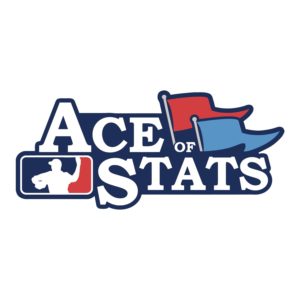
There are, have always been, and will always be players in baseball trying to get an edge in some way, shape, or form – from anabolics to emery boards, from speed to cork. Many want to point fingers at players like Barry Bonds, one of the greatest ballplayers of all-time, and Mark McGwire for ruining the game, when in fact, many of these guys never received a suspension, failed a drug test, or even took an illegal, banned, or tested substance – note I did not say steroid or anabolic compound – for that matter.
Doping has always been a part of baseball and will always be, as the drugs will always be ahead of the testing curve. From Pud Galvin, a Hall of Famer mind you, reportedly using monkey testosterone in 1889, to one of the greatest sluggers in history, Babe Ruth, allegedly injecting sheep testicles in 1925, to Hall of Famers like Hank Aaron, Mickey Mantle, Willie Mays admittedly using greenies (amphetamines) in the 1970s; Aaron’s former teammate Tom House even said that he and his teammates were taking everything under the sun – amphetamines, HGH, whatever steroids they could find, “things that shouldn’t be given to horses,” in the 1970s; to the cocaine scandal of 1985, to the juiced players of the 1990s and 2000s, and so on.
Even modern players use performance enhancing drugs (PEDs), and no, I am not even talking about Robinson Cano and the like who were suspended for their illegal usage; therapeutic use exemptions (TUEs) are obtained by many players in today’s game, for everything from Adderall to testosterone therapy to even Human Growth Hormone (HGH). Not to mention things that remain untested – blood doping, stem cell therapy, et al; even platelet-rich plasma (PRP) therapy could be considered PED-use, but it is utilized and accepted throughout Major League Baseball – as it should be, but that is not the point.
Often, I hear the argument: “amphetamines are way different than the steroids players are or were using,” and this is true, there is no debating that. But they have a number of things in common with them.
Example 1: the end goal – to endure a grueling 162-game season and play everyday at 100 percent – is the same when using both drugs.
Example 2: the greenies of the 1970s and let’s say the androst-4-ene-3, 17-dione, or “Andro,” that was sitting in Mark McGwire’s locker during his famous 1998 season, are both banned today, but not at the time when said players were using them.
Example 3: the drugs used, the greenies of the 1970s or the steroids of the 1990s, were the best drugs readily available to players at that specific time.
My overall point is this: to say that one thing is okay, to give certain players a pass for any reason – generally, what I see is fans and writers giving Aaron, Mays, Mantle, et al. a pass because they grew up idolizing them, though they would never admit that is why, rather they camouflage their bias under the guise that, “it is different,” when really, it is not – is wrong. To say these guys are allowed in, because they somehow “cheated less” is delusional.
Lastly, even if I cannot convince you on anything I have said above, at least hear this: to say a guy like Jeff Bagwell does not belong in the Hall of Fame, to take from him what he earned, due to the fact that he was “probably a ‘ROIDER'” because of the era in which he played and the numbers he put up – while simultaneously guaranteeing Junior’s innocence, mind you – is wrong. No one is guilty by association in this.
Having said all of this, I do not condone drug use or drug use in baseball. Suspensions are now in place and are, in my opinion, a fit punishment. But, I also am not willing to write-off a player’s entire career, for example Manny Ramirez or David Ortiz, because they tested positive.
Final thought: Mark McGwire saved baseball. He should not only be in the National Baseball Hall of Fame, but he should also have a bronze statue out front of the museum.





[…] Forget the Plaque, McGwire Deserves a Damn Statue […]